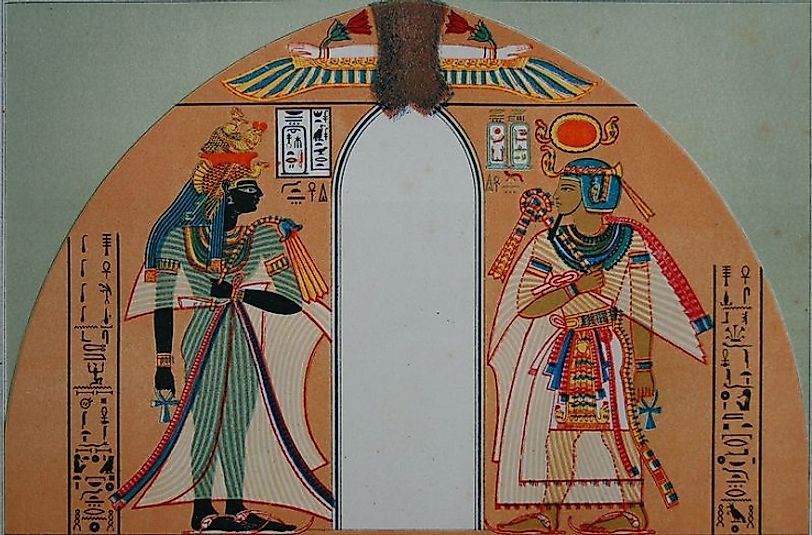The New Kingdom Dynasties Of Ancient Egypt

5. Background and Initial Formation
The New kingdom was an exhilarating time in Egyptian history, and a time when Egypt's pharaohs reigned amidst splendor and power. The 18th Dynasty opened with a continuing liberation war led by Ahmose I against the Hyksos invaders that had occupied northern Egypt. In the preceding dynasty Ahmose I's brother, Kamose, had started the war to free Egypt from the Hyksos. Pharaoh Ahmose I intensified the war, taking back town after town occupied by the enemy invaders from the north. In time, these invaders were totally expelled from the country. After the Hyksos' removal, a day dawned when Egypt ruled in the world like never before, heralding in a second Egyptian Golden Age. Marriages between neighboring nations became common as well, these being means to seal peace pacts and treaties.
4. Rise To Power And Accomplishments
The 18th Dynasty pharaohs ruled for 250 years, often doing so with an iron hand. At the same time, Egypt was increasing trade with other nations to refill its war-depleted treasuries. Ahmose I reigned for 25 years, followed by his son, Amenhotep I, who ruled for 21 years. Twelve more pharaohs reigned in the 18th Dynasty that brought a new power and strategy for Egypt in international relations. The government was restructured to have only officials that were appointed on merit as well. Thutmose I annexed Nubia, and later Hatshepsut and Thutmose III made Egypt's military an even greater force to reckon with than ever before. Amenhotep III supported the arts, Akhenaton and Nefertiti introduced the "one god" religion, and Tutankhamun led a legendary life, ruling with his Royal Wife and Queen Ankhesenamun beside him.
3. Challenges and Controversies
The 19th Dynasty lasted for 110 years, and was a time of plenty and opulence in Egypt, though such affluence had began during the 18th Dynasty. Pharaoh Seti I built a grand temple in Abydosm and many older temples and monuments were rebuilt and restored to honor Egypt's glorious past. Seti I was followed to the throne by his son, Rameses II, who brought the rival Hittites (from modern day Tuerkey and Syria) to their knees. Rameses II reigned for 66 years, and had one of the longest reigns in Egyptian history. He was known for his wars with the Hittites and the Libyans, who had become powerful nations and a threat to his rule. Most notably of all, he built enormous monuments to commemorate himself for ages.
2. Decline and Demise
The 20th Dynasty was marked with glorious triumphs, but was also the start of the decline of the New Kingdom. Pharaoh Setnakht ruled for only a little more than two years, but in that short time established an atmosphere of peace in Egypt. He was followed by his son, Rameses III, who, like his namesake, went on a warring campaign to destroy foreign threats to Egypt. He eventually defeated the Sea Peoples (raiders from the Aegean Sea), who had been on the march to conquer neighboring nations. Numerous among his successors, from Rameses IV through Rameses XI, were each named after him. However, after internal government failures occurred, the start of decline of the New kingdom could not be halted as the Egyptian economy suffered.
1. Historical Significance and Legacy
After the decline and death of Rameses XI, the New Kingdom faltered and a new pharaoh took over the reigns of power. Smendes proclaimed himself pharaoh, and ruled for 26 years. Afterwards, Egypt was thrown into chaos again, and the kingdom was divided into several fiefdoms, each ruled by their own minor rulers, and even the high priests at Thebes were crowned as kings. The fall of the New Kingdom was a result of inefficient rules by ineffective pharaohs during the 20th Dynasty. Although the advent of the dynasty was a propitious one, its end was a chaotic implosion. The whole span of the New Kingdom left a legacy of power and then decline that included wars, treaties, opulence, prosperity, and the unique rule of three queens. In short, the New Kingdom was characteristic of the many great rises and falls that embodied much of ancient Egyptian history.







